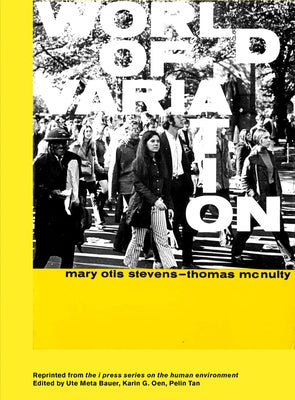Weiss Berlin
World of Variation: The I Press Series on the Human Environment
World of Variation: The I Press Series on the Human Environment
Couldn't load pickup availability
An imaginative reenvisioning of spatial and social relations from America's 1960s urbanist movement
In World of Variation (1970), American architects Mary Otis Stevens (born 1928) and Thomas McNulty (1919-84) outlined a radical reenvisioning of socio-spatial relationships, informed by their background in philosophy and commitment to decentralizing hierarchies. Writing in the context of the Cold War and the political activism of 1960s America, they identified possible design solutions to then-current social issues. In striking abstract drawings, Stevens visualized aspects of the urban environment, proposing a design philosophy she termed "free flow." These diagrams give expression to both the "flow" of movement and points of "hesitations."
This volume is a facsimile of World of Variation, accompanying the MIT Museum's exhibition on the work of Mary Otis Stevens.
Born in New York in 1928, Mary Otis Stevens is considered one of the most important female American postwar architects. She is best known for Lincoln House (1965), designed with her then-husband Thomas McNulty, the first exposed-concrete and glass house in the US.
Thomas McNulty (1919-84) taught on MIT's faculty from 1949 to 1956, before leaving to open a firm with his then wife, Mary Otis Stevens. In 1978, the couple divorced and McNulty moved to Saudi Arabia, where he taught at the University of Riyadh.
Author: Mary Otis Stevens, Thomas McNulty
Binding Type: Paperback
Publisher: Weiss Berlin
Published: 11/22/2022
Pages: 208
Weight: 0.95lbs
Size: 8.20h x 6.20w x 0.80d
ISBN: 9783948318178


